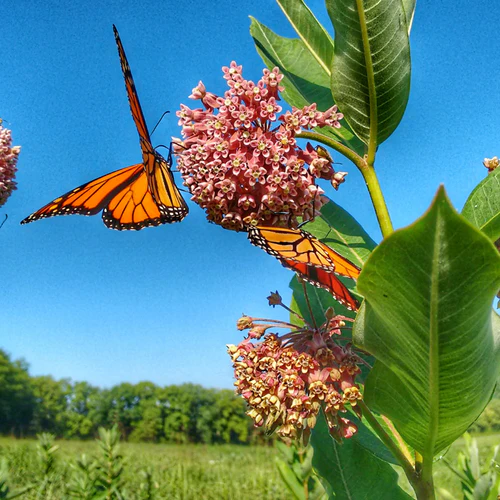Milkweed is one of the most essential plants in our environment. It provides food and shelter to wildlife, including butterflies, bees, moths, and other pollinators. In addition to providing these benefits, milkweed is easy to grow and can be found in many different climates. In this article, we will explore everything there is to know about milkweed.
About Milkweed

Milkweed belongs to the herbaceous family and is a perennial plant. When properly cared for, it can live up to two years. It’s a popular choice among butterflies as it provides them with a safe place to lay eggs, while their leaves serve as food for newly hatched larvae, allowing them to reproduce.
Canada has around thirteen distinct types of milkweed, one of the most popular being Aslepias. This plant blooms in pastels shades like pink, purple, white and orange, producing clusters of star-shaped flowers with milky sap inside their stems.
Historically
Humans have utilized milkweed for a long time, not only as an essential part of the ecosystem but also as a source of the material. Its silk-like fibres have been used to stuff pillows and mattresses for centuries.
For centuries, numerous indigenous tribes have also implemented milkweed for various medicinal purposes. It was applied as a treatment for warts, chewed to cure dysentery, and utilized in salves and infusions to ease swelling, rashes, coughs, fevers and asthma.
Pro-Tip: To escape the wind and find some reprieve after a tiring day, butterflies look for cozy spots like beneath leaves, between blades of grass, tucked between rocks or even huddled up on tree branches. As gardeners, the best thing we can do to provide a safe shelter for butterflies is to introduce a manmade butterfly home! Place your butterfly home near your popular butterfly flowers to make sure it’s visible, and add some sticks and dry leaves to help entice them.
How to Grow Milkweed

By introducing certain milkweed into your garden or landscape, you can create a natural habitat that will attract beneficial insects such as bees, butterflies, and other pollinators while also repelling common pests. This cheap and simple solution is a great way to make a positive impact on the environment while also taking care of pesky pest problems!
| Sun | Full sunlight |
| Sow | Start sowing the seeds indoors 6-8 weeks before the last frost date, and then transplant them or sow directly in late spring. The optimal soil temperature for germination is between 10-25°C (50-75°F). |
| Sprout | 7-35 days. |
| Cover | Make sure to just sprinkle the tiny seeds with a sterilized seed starting mix. When it’s time for transplanting, be sure to keep them 30-60 cm or 12-24 inches apart. |
| Zone | Hardy to Zone 3 |
| Difficulty | Easy |
Pro-tip: All varieties of milkweed native to Canada contain a milky sap with poisonous qualities. Be sure to wear gloves when handling!
Popular Varieties to Try!

|

|

|

|


